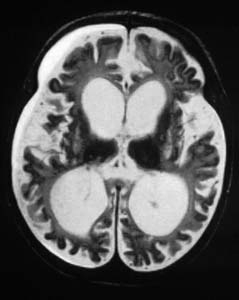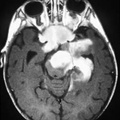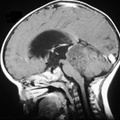
RADIOLOGY: HEAD: Case# 33613: HYPOXIA OR DIFFUSE EDEMA FROM TRAUMA FOLLOWING CHILD ABUSE. This four year old child was brought to the emergency room with a history of "being too sleepy.". CT scan without contrast reveals diffuse low density of the cerebral hemispheres, making the normal density cerebellum appear comparitively dense. Hypoxic-ischemic insults to the central nervous system of infants may show a characteristic sequence of imaging findings. CT immediately after the insult may be normal or near normal in appearance. Over 24-48 hours, diffuse cerebral edema causes loss of the distinction between grey and white matter, obliteration of cortical sulci, and diffuse low density. Frequently there is relative sparing of the cerebellum and or basal ganglia which appear hyperdense compared to the abnormally low density cerebral hemispheres. This has been termed the "reversal" or "white cerebellum" sign. Severe atrophic changes occur in surviving infants. The discrepancy between this patients history and the severe insult should have made you suspect child abuse. CT scan without contrast in a different patient reveals diffuse low density of the cerebral hemispheres, making the normal density basal ganglia appear relatively dense. T2 weightd axial MRI obtained three months later reveals severe atrophic changes.
- Author
- Peter Anderson
- Posted on
- Thursday 1 August 2013
- Albums
- Visits
- 1560


0 comments